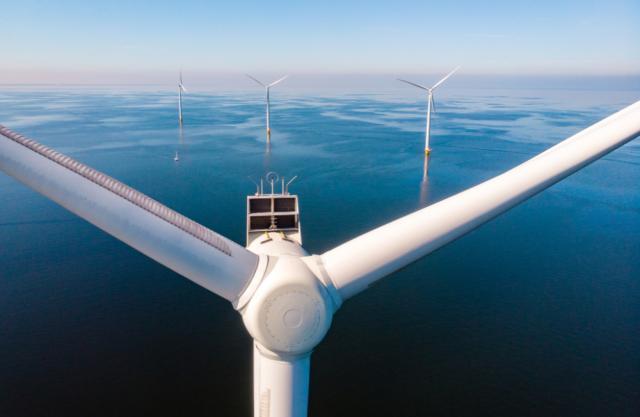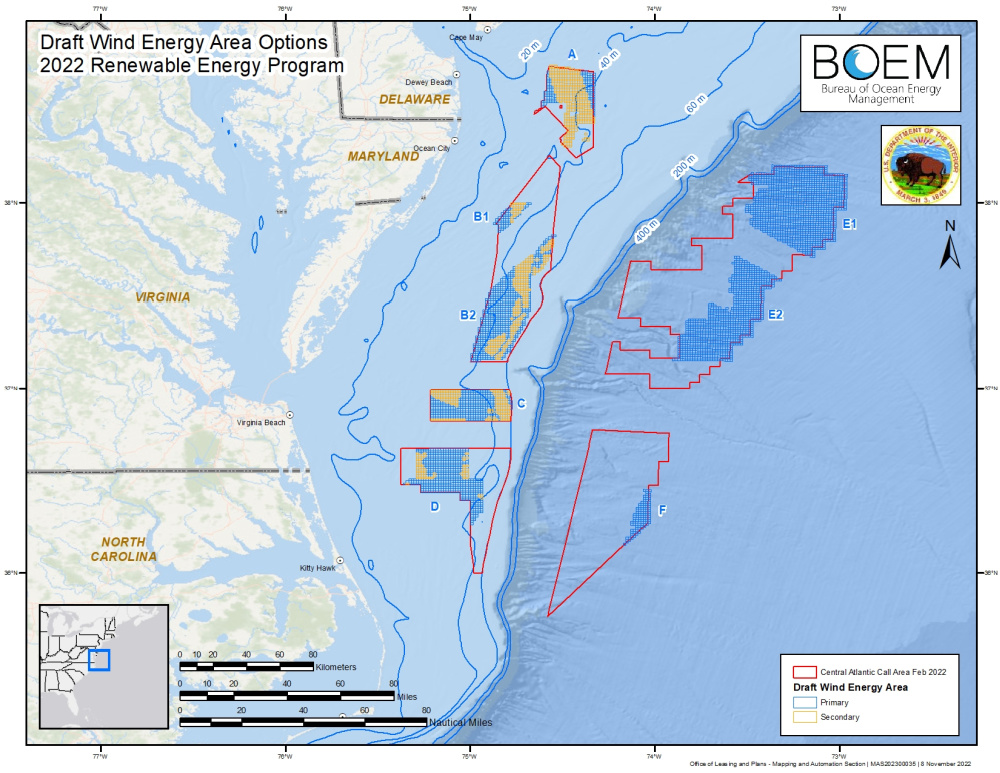
The draft wind energy areas (WEA) are part of the original 3.9 million-acre area shared by the Interior Department during public comment in April. (Source: Shutterstock.com0
The U.S. has identified eight areas in the Central Atlantic for potential wind development as the nation works to deploy 30 gigawatts (GW) of offshore wind capacity by 2030.
The draft wind energy areas (WEA) are part of the original 3.9 million-acre area shared by the Interior Department during public comment in April. The latest areas, released Nov. 16 by the Bureau of Ocean Energy Management (BOEM), span about 1.7 million acres offshore Delaware, North Carolina, Maryland and Virginia.
Further modifications could be made after receiving feedback.
“We want to gather as much information and traditional knowledge as possible to help us identify Wind Energy Areas—the offshore areas that are most suitable for commercial wind energy activities while having the fewest apparent environmental and user conflicts,” BOEM Director Amanda Lefton said in a statement.
The release of the draft wind energy areas kicks off a 30-day public comment period, which will include virtual meetings to gather input from stakeholders such as the fishing community and environmental groups. Potential conflicts already identified by BOEM include a “U.S. Coast Guard safety fairway for vessels, commercial fishing, a NASA danger zone, and marine habitat areas.”

News of the WEAs was welcomed by the National Ocean Industries Association, which President Erik Milito said successfully advocated the overturn of a 10-year offshore wind leasing moratorium from North Carolina to the Eastern Gulf of Mexico in the Inflation Reduction Act.
“The $315 million Carolina Long Bay offshore wind lease sale shows how attractive the region is for offshore wind investments,” Milito said in a statement. “Today’s announcement will allow North Carolina and other coastal states to keep wind momentum going.”
The current draft wind energy areas were selected in collaboration with the National Oceanic and Atmospheric Administration’s National Centers for Coastal Ocean Science, using an ocean planning model that seeks to minimize conflicts, BOEM said.
The release comes as the Biden administration gears up for the nation’s first offshore wind lease sale in the Pacific, which could become home to commercial-scale floating wind developments. Scheduled for Dec. 6, five lease areas covering some 373,270 acres offshore central and northern California will be offered. BOEM has said the area has the potential to generate more than 4.5 GW off wind energy, enough to power 1.5 million homes.
With two finalized wind energy areas, the Gulf of Mexico is also up for potential wind development—offshore Galveston, Texas, and Lake Charles, Louisiana. A lease sale could be called sometime in 2023.
“Offshore wind is a national endeavor with national benefits,” Milito said. “The more offshore wind leases and the greater the geographical diversity of new American offshore wind projects, the greater the benefits will be to the national supply chain.”
Recommended Reading
For Sale, Again: Oily Northern Midland’s HighPeak Energy
2024-03-08 - The E&P is looking to hitch a ride on heated, renewed Permian Basin M&A.
E&P Highlights: Feb. 26, 2024
2024-02-26 - Here’s a roundup of the latest E&P headlines, including interest in some projects changing hands and new contract awards.
Gibson, SOGDC to Develop Oil, Gas Facilities at Industrial Park in Malaysia
2024-02-14 - Sabah Oil & Gas Development Corp. says its collaboration with Gibson Shipbrokers will unlock energy availability for domestic and international markets.
E&P Highlights: Feb. 16, 2024
2024-02-19 - From the mobile offshore production unit arriving at the Nong Yao Field offshore Thailand to approval for the Castorone vessel to resume operations, below is a compilation of the latest headlines in the E&P space.
TotalEnergies Acquires Eagle Ford Interest, Ups Texas NatGas Production
2024-04-08 - TotalEnergies’ 20% interest in the Eagle Ford’s Dorado Field will increase its natural gas production in Texas by 50 MMcf/d in 2024.






